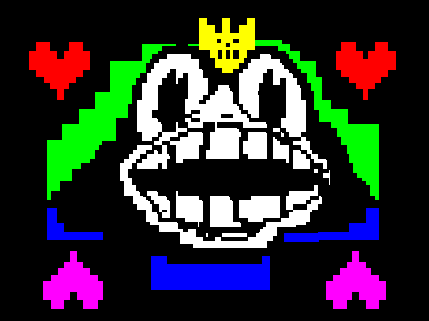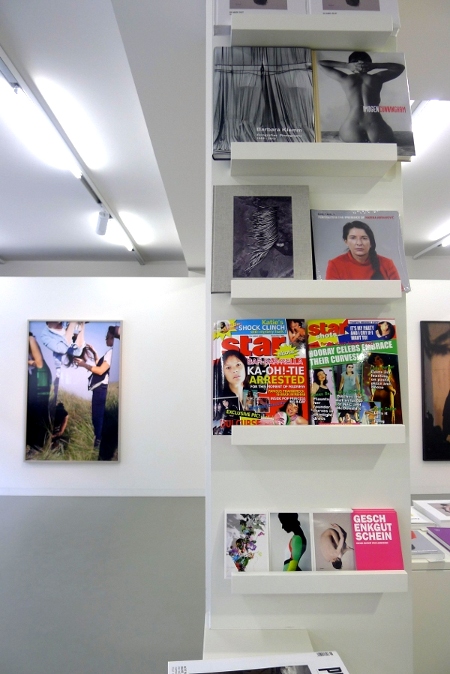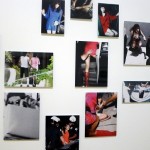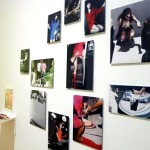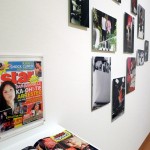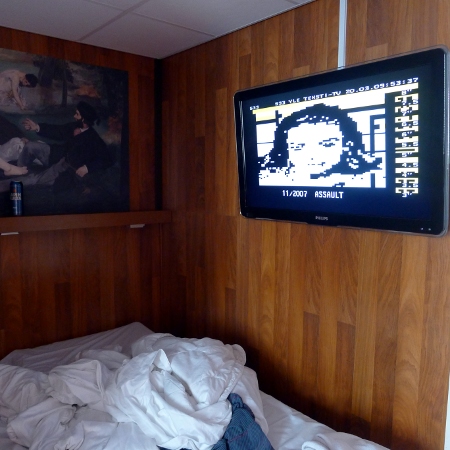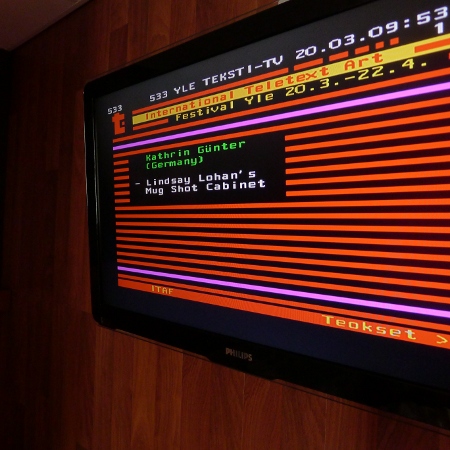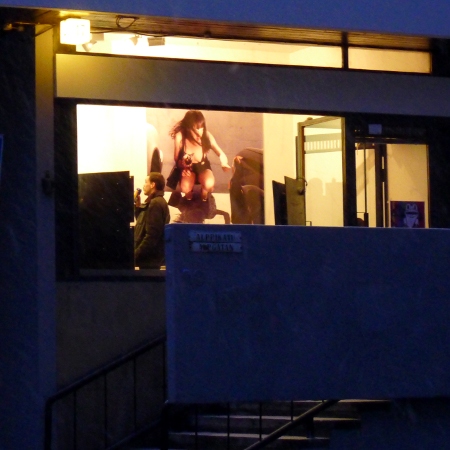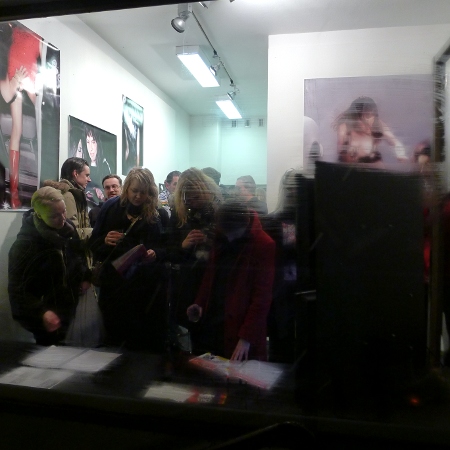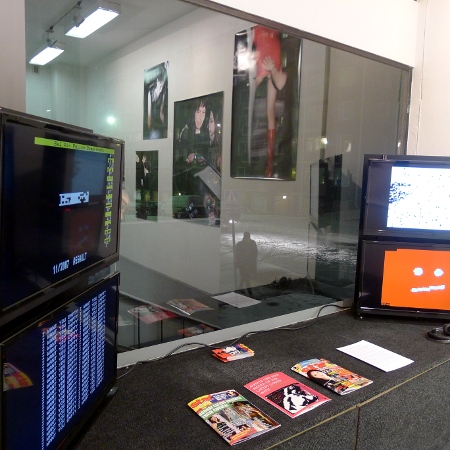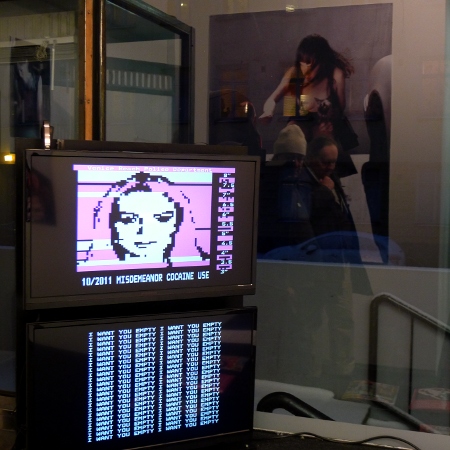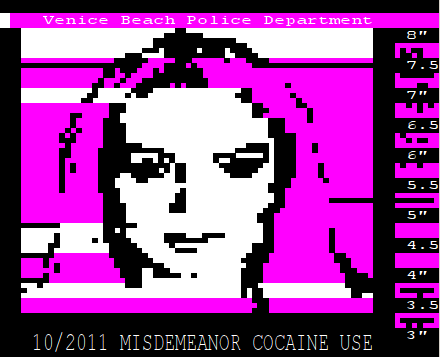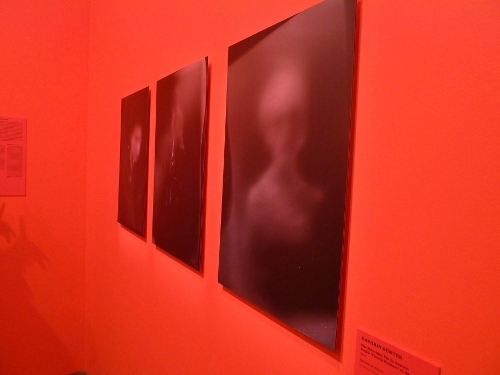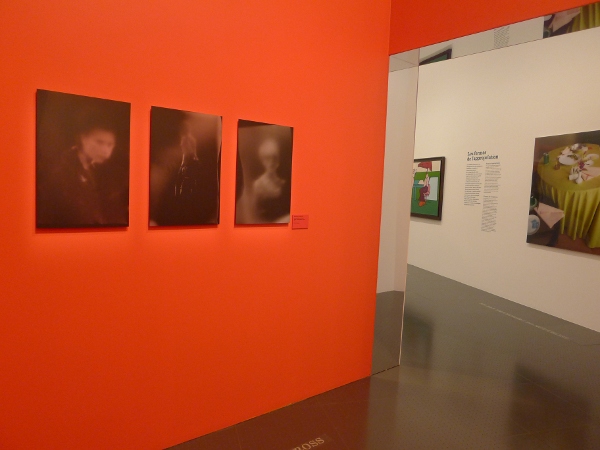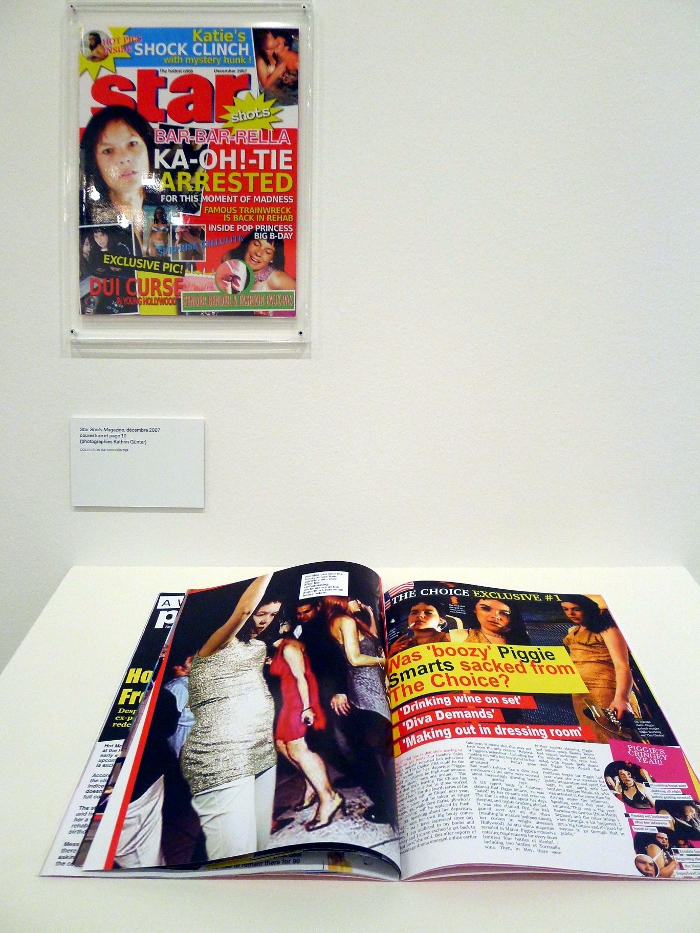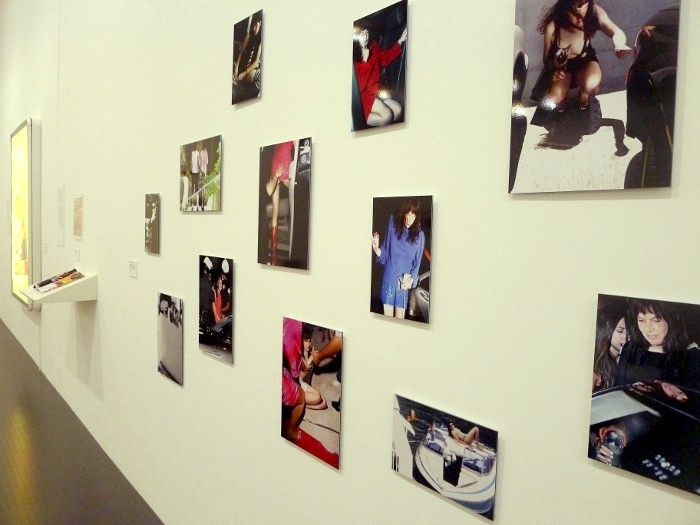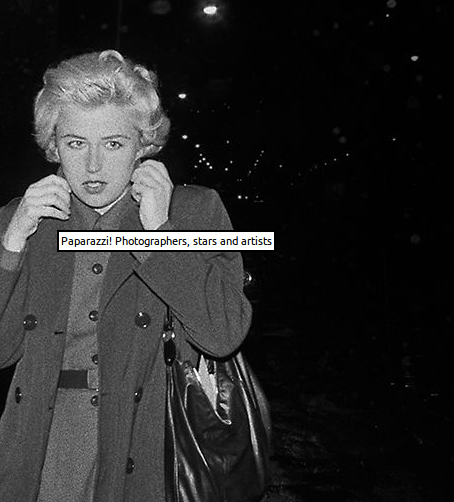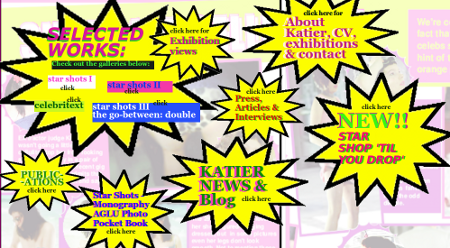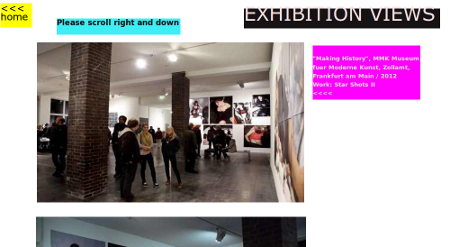OPENING AND VENUES
The festival and an ITAF2014 exhibition is opened on August 14th in Berlin at the Rundfunk Berlin-Brandenburg (rbb) Masurenallee 16–20, 14057 Berlin
Registration via: info@ard-text.de
In the exhibition the ITAF2014 works will be displayed on screens acomppanied by a selection of works from ITAF2012-13 as prints. Artists include:
Nadine Arbeiter, Kim Asendorf, Michaël Borras a.k.a Systaime, Max Capacity, Paul B. Davis, Maria Duncker, Dragan Espenschied, Dan Farrimond, Kathrin Günter, Anne Horel, Brendan Howell, Francis Hunger, Juha van Ingen, Marc Lee, Jürg Lehn, LIA, Raquel Meyers, Erkka Nissinen, Rich Oglesby, Seppo Renvall, Alex Rich, Jarkko Räsänen, Amanda Siegel and Kari Yli-Annala
The opening continues From 8:00 pm -> at Z-Bar, Bergstr. 2, 10115 Berlin with: Lo-tech teletext art video mix + Chiptune Music presented by FixC cooperative
FREE ENTRY WELLCOME! +
14.8. The opening of ITAF2014 also marks the broadcasting of Dragan Espenschieds “Lucky Cat” as the first artwork presented in the Museum of Teletext Art MUTA.
ITAF2014 program: –
On teletext: ARD Text from page 850, ORF TELETEXT from page 470 , Schweizer TELETEXT from page 750, arte Teletext, 3satText and ORF III-Teletext –
On site: 14.8.-14.9. Rundfunk Berlin-Brandenburg (rbb) Masurenallee 16–20, 14057 Berlin
14.8.-14.9. MuseumsQuartier Wien Museumsplatz 1, 1070 Vienna
Pop-up Gallery at IFA Berlin ARD Digital, Halle 2.2, Stand 103 Messedamm 22, 14055 Berlin –
On the Internet: The audience is invited to participate in ITAF in the House by taking pictures of ITAF2014 art works on TV-screens in private and public spaces. –
Teletext Art Prize: Teletext Art Prize was first launched in 2013 to promote teletext-art and to credit artists who have created outstanding artworks in the medium. The prize is given by an international team of experts. –
Finisage: ORF/ MuseumsQuartier Vienna 26.9. 18.00 – > in FISH Helsinki Alppikatu 17 lh 2 00530 Helsinki

